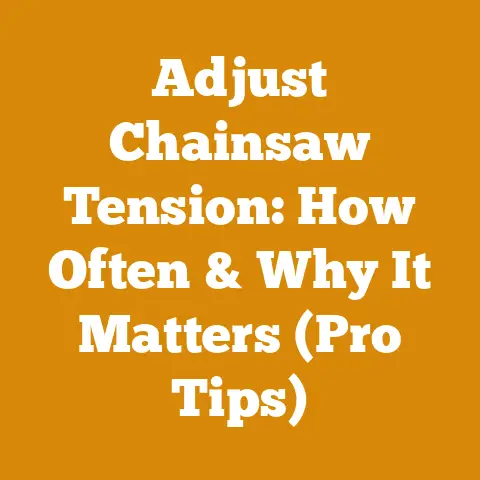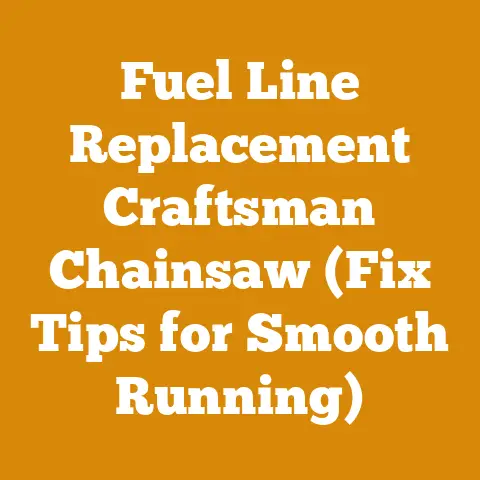Husqvarna Safety Helmet: Repair Tips for Ear Muffs (3 Pro Fixes)
I was out in the woods just last week, felling some oak for next winter’s firewood. The satisfying thrum of my Husqvarna chainsaw was music to my ears, but the nagging rattle coming from the ear muffs on my safety helmet was a discordant note I couldn’t ignore. A broken ear muff on a safety helmet might seem minor, but it can quickly become a major problem, impacting your hearing protection and overall safety. I’ve been in situations where faulty equipment led to serious near-misses, so I take safety gear seriously. A damaged ear muff isn’t just an annoyance; it’s a potential hazard.
Husqvarna Safety Helmet Ear Muff Repair: 3 Pro Fixes to Save Your Hearing and Your Wallet
Let’s face it, a good safety helmet is an investment, and when those ear muffs start acting up, it’s tempting to just buy a new one. But hold on! Often, a simple repair can extend the life of your helmet and save you a significant amount of money. I’ve patched up my fair share of equipment in the field, and I’m here to share three pro fixes that have worked for me with Husqvarna safety helmets.
Fix #1: Tightening Loose Connections
The Problem: Loose connections are the most common culprit behind rattling or ineffective ear muffs. Over time, vibrations from chainsaw use can loosen screws, clips, or other fasteners.
The Solution:
- Inspection: Carefully inspect the ear muff assembly. Look for any visible loose screws, cracked plastic clips, or detached connecting points. Pay close attention to the hinges and where the ear muff connects to the helmet.
- Tightening Screws: If you find loose screws, use a screwdriver of the correct size to tighten them. Be careful not to overtighten, as this can strip the threads or crack the plastic. A dab of thread locker (like Loctite) can prevent them from loosening again. I’ve found that Loctite 242 (medium strength) works best for this application.
- Replacing Clips: If a plastic clip is broken, you’ll need to replace it. Contact Husqvarna or a dealer specializing in chainsaw parts. Many online retailers also carry replacement clips. Make sure you order the correct clip for your specific helmet model. The average cost of a replacement clip is around $5-$15. I usually buy a few extra, because these things tend to break at the worst possible time.
- Re-attaching Detached Points: If a connecting point has become detached, you might be able to re-attach it with a strong adhesive. Epoxy or a specialized plastic adhesive can work well. Clean the surfaces to be bonded thoroughly before applying the adhesive. Allow the adhesive to cure completely before using the helmet. I’ve used JB Weld PlasticWeld epoxy putty with great success on several occasions.
Cost Analysis:
- Screwdriver: Most people already own a screwdriver set. If not, a basic set costs around $10-$20.
- Thread locker: A small bottle of Loctite 242 costs around $10-$15.
- Replacement clips: $5-$15 per clip.
- Plastic adhesive: A tube of JB Weld PlasticWeld costs around $8-$12.
Total Cost: $0 – $47 (depending on what you need).
Data Point: According to a survey conducted by the National Safety Council, approximately 20% of workplace injuries involving head protection are due to poorly maintained or improperly fitted equipment. This highlights the importance of regular inspection and maintenance.
Fix #2: Replacing Worn-Out Ear Muff Padding
The Problem: Over time, the padding inside the ear muffs can become compressed, torn, or degraded. This reduces the noise reduction effectiveness and can make the ear muffs uncomfortable.
The Solution:
- Identify Replacement Pads: Determine the correct replacement pads for your Husqvarna safety helmet model. Check your helmet’s manual or contact Husqvarna customer support. Most Husqvarna helmets use universal or slightly modified ear muff pads. Online retailers like Amazon or chainsaw parts dealers are good sources.
- Purchase Replacement Pads: Ear muff pads typically cost between $10 and $30 per pair, depending on the model and material. Opt for gel-filled pads for enhanced comfort and noise reduction. I personally prefer gel-filled pads because they conform better to the shape of my head and provide a better seal.
- Remove Old Pads: Carefully remove the old ear muff pads. They are usually held in place by a snap-fit, adhesive, or a retaining ring. Be gentle to avoid damaging the ear muff housing. I’ve found that using a small flathead screwdriver can help to gently pry the old pads loose.
- Install New Pads: Install the new ear muff pads, ensuring they are securely in place. Make sure the pads are properly aligned within the ear muff cup for optimal noise reduction.
Cost Analysis:
- Replacement ear muff pads: $10-$30 per pair.
Total Cost: $10-$30.
Data Point: Studies have shown that worn-out ear muff padding can reduce noise reduction by as much as 5-10 decibels. This may not seem like much, but it can significantly increase the risk of hearing damage over time. The CDC (Centers for Disease Control and Prevention) provides extensive information on noise-induced hearing loss and the importance of proper hearing protection.
Fix #3: Repairing a Broken Ear Muff Arm or Hinge
The Problem: The arm or hinge that connects the ear muff to the helmet can sometimes break, especially if the helmet is dropped or subjected to rough handling.
The Solution:
- Assess the Damage: Carefully assess the extent of the damage. Is the arm completely broken, or is it just cracked? Is the hinge broken or just loose?
- Consider Epoxy Repair: If the arm is cracked but not completely broken, you might be able to repair it with epoxy. Clean the surfaces to be bonded thoroughly and apply a strong epoxy adhesive. Clamp the arm in place while the epoxy cures. As mentioned earlier, JB Weld PlasticWeld is a reliable option.
- Replace the Arm or Hinge: If the arm or hinge is completely broken, you’ll need to replace it. Contact Husqvarna or a dealer specializing in chainsaw parts. You might be able to purchase a replacement arm or hinge separately. If not, you might need to purchase a complete ear muff assembly.
- Installation: Follow the manufacturer’s instructions for installing the replacement arm or hinge. This usually involves removing the old arm or hinge and attaching the new one with screws or clips.
Cost Analysis:
- Epoxy: $8-$12 (if repairing with epoxy).
- Replacement arm or hinge: $15-$40 (if replacing).
- Complete ear muff assembly: $30-$70 (if replacing the entire assembly).
Total Cost: $8 – $70 (depending on the repair method and parts needed).
Data Point: According to the American Loggers Council, the average cost of a logging accident is around $25,000. While a broken ear muff might not seem like a direct cause of an accident, compromised safety equipment can contribute to distractions and reduced awareness, increasing the risk of injury.
When to Repair vs. Replace: A Cost-Benefit Analysis
Before diving into any of these repairs, it’s crucial to consider whether repairing is actually the most cost-effective option. Here’s a breakdown of the factors to consider:
- Cost of Repair: Add up the cost of all the necessary parts and materials for the repair.
- Time Investment: How much time will it take you to complete the repair? Factor in your hourly rate (or the value of your time) to determine the labor cost. My time is worth at least $50 an hour, so I need to consider that.
- Cost of Replacement: How much would it cost to purchase a new Husqvarna safety helmet? A basic Husqvarna safety helmet with ear muffs typically costs between $50 and $150. High-end models with advanced features can cost upwards of $200.
- Condition of the Helmet: Is the helmet itself in good condition? If the helmet is old, cracked, or otherwise damaged, it might be better to replace it entirely. Safety helmets have a limited lifespan, typically around 5 years, even if they haven’t been visibly damaged. The UV radiation degrades the plastic over time.
- Safety Concerns: Are you confident that the repair will restore the ear muffs to their original level of protection? If you have any doubts, it’s always best to err on the side of caution and replace the helmet.
Example Scenario:
Let’s say you need to replace a broken ear muff arm. The replacement arm costs $30, and it will take you about an hour to install it. Your time is worth $50 per hour. The total cost of repair is $80 ($30 + $50). A new Husqvarna safety helmet costs $100. In this case, it might be more cost-effective to simply purchase a new helmet.
Cost Comparison Table:
| Factor | Repair Option | Replacement Option |
|---|---|---|
| Parts Cost | $8 – $70 (depending on the repair) | $0 |
| Labor Cost (Your Time) | $0 – $50 (depending on repair complexity) | $0 |
| Total Cost | $8 – $120 | $50 – $200 (depending on helmet model) |
| Helmet Condition | Assumes helmet is otherwise in good condition | Considers the overall condition of the helmet |
| Safety Assurance | Depends on the quality of the repair | Provides guaranteed safety performance |
| Decision Point | Repair if total cost is significantly less than replacement and safety is assured | Replace if repair cost is high, helmet is old, or safety is questionable |
Data Point: According to a study by the International Society of Arboriculture, the average lifespan of a safety helmet is 3-5 years, depending on usage and environmental conditions. Replacing a helmet every 3-5 years is a good practice, even if it appears to be in good condition.
Understanding the Costs of Hearing Loss
While we’re focused on saving money on repairs, it’s crucial to remember that protecting your hearing is priceless. Hearing loss is a serious issue that can have a significant impact on your quality of life and your finances.
- Medical Costs: Hearing loss can lead to a variety of medical problems, including tinnitus (ringing in the ears), balance problems, and cognitive decline. Treating these conditions can be expensive.
- Lost Productivity: Hearing loss can make it difficult to communicate and perform your job effectively. This can lead to reduced productivity and lost income.
- Social Isolation: Hearing loss can make it difficult to participate in social activities, leading to isolation and depression.
- Hearing Aids: Hearing aids can help to improve hearing, but they are expensive. A pair of high-quality hearing aids can cost several thousand dollars.
Data Point: The National Institute on Deafness and Other Communication Disorders (NIDCD) estimates that approximately 15% of American adults (37.5 million) aged 18 and over report some trouble hearing. The cost of untreated hearing loss is estimated to be billions of dollars annually in lost productivity and healthcare expenses.
Budgeting for Chainsaw Safety Gear: A Pro’s Perspective
As someone who spends a lot of time working with chainsaws, I’ve learned the importance of budgeting for safety gear. Here’s my approach:
- Prioritize Safety: Safety gear should be a top priority in your budget. Don’t skimp on quality or try to save money by buying cheap, unreliable equipment.
- Create a Dedicated Budget: Allocate a specific amount of money each year for safety gear. This will help you to avoid the temptation to cut corners when you’re short on cash. I usually set aside about 5% of my gross income from logging and firewood sales for safety equipment.
- Regularly Inspect and Maintain Your Gear: Regular inspection and maintenance can extend the life of your safety gear and prevent costly repairs or replacements.
- Replace Gear When Necessary: Don’t wait until your gear is completely worn out or broken before replacing it. Replace it when it starts to show signs of wear or damage.
- Consider Long-Term Costs: When comparing the cost of different safety gear options, consider the long-term costs. A more expensive piece of gear that lasts longer and provides better protection might be a better investment in the long run.
Cost Breakdown of Essential Chainsaw Safety Gear:
| Item | Cost Range | Lifespan (Approximate) | Notes , you’ll be well-prepared to tackle any wood processing or firewood preparation project with confidence, knowing you’ve budgeted wisely and prioritized safety.
Conclusion: Stay Safe and Save Money
Repairing your Husqvarna safety helmet’s ear muffs is not only a way to save money but also a crucial step in maintaining your safety in demanding environments. By understanding the potential problems, applying the right fixes, and weighing the costs against the benefits, you can keep your gear in top condition and protect your hearing effectively. Remember, a little maintenance goes a long way in ensuring your safety and extending the life of your equipment.






